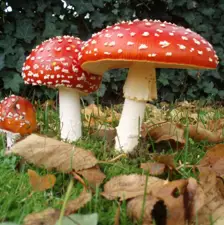A growing trend in mushroom “microdosing” has sparked a rise in poison control center calls and emergency room visits. As more consumers embrace mushrooms—both hallucinogenic and non-hallucinogenic—the popularity of these products is raising questions about safety and effectiveness.
Mushroom ‘microdosing’ trend has led to increased poison control center calls and ER visits

Key Takeaways:
- Mushroom microdosing is on the rise.
- Poison control centers and ERs report increased concerns.
- Public acceptance of mushrooms and psychedelics is growing.
- Non-hallucinogenic mushroom products claim mental benefits.
- These developments raise health and safety questions.
A Rising Trend
Mushroom “microdosing” is gaining popularity among consumers intrigued by potential benefits for mental clarity and well-being. This practice, once a fringe idea, involves taking very small amounts of mushrooms—often with the hope of improving mood or cognitive function. However, the movement has also led to a noticeable uptick in calls to poison control centers, hinting at serious safety considerations for the general public.
Growing Public Acceptance
In recent years, societal perspectives on mushrooms and psychedelics have shifted. Greater openness to potential therapeutic uses has expanded the market for a variety of mushroom-based products, including capsules, teas, and supplements. While many of these offerings reportedly contain only non-hallucinogenic species, their arrival signals broader acceptance among consumers seeking natural methods for enhancing mental function.
A Burgeoning Market
As interest in mushrooms grows, so does the industry that caters to it. Non-hallucinogenic varieties, sometimes advertised to boost focus or creativity, appear in everything from edibles to wellness supplements. Companies claim these products can help people manage daily stress and improve cognitive performance. It remains unclear how effective these claims are, but the robust sales of these items suggest that many are willing to give them a try.
Public Health Implications
Despite claims of safety, the microdosing trend has already led to increased calls to poison control centers and more frequent trips to the emergency room. Some experts point to possible confusion about which types of mushrooms are safe and how to accurately measure dosages. The growing wave of edible mushroom products—often sold in unregulated sectors—compounds the risk if consumers mistakenly assume that “natural” means “harmless.”
Looking Ahead
While the desire for improved mental function shows no sign of slowing, the rapid growth of the mushroom market raises important questions for consumers and health professionals alike. Understanding the distinctions between hallucinogenic and non-hallucinogenic mushrooms, as well as the required dosages, is essential. For now, the surge in poison control calls serves as a reminder that even promising trends can carry hidden dangers.











